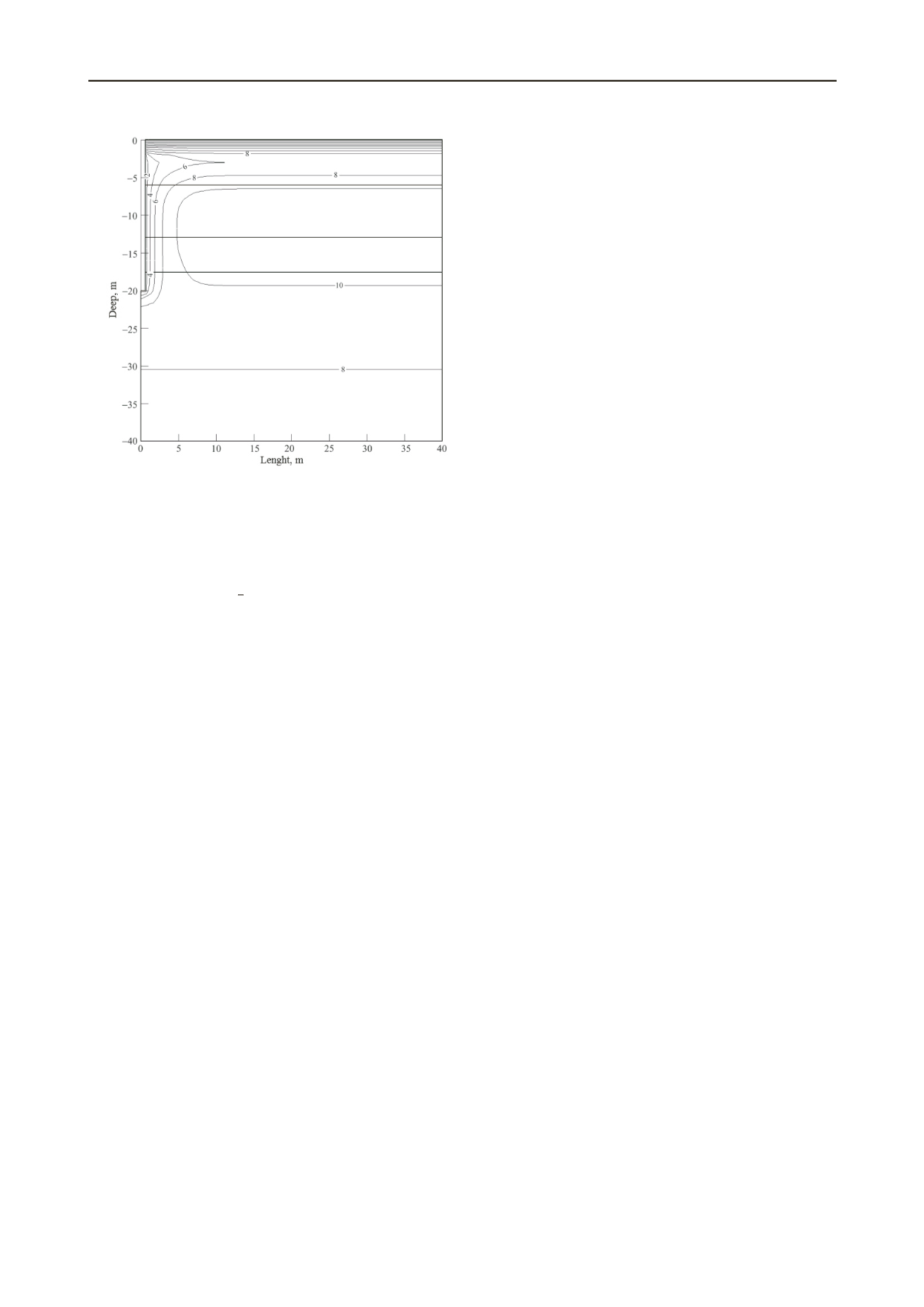
3402
Proceedings of the 18
th
International Conference on Soil Mechanics and Geotechnical Engineering, Paris 2013
5 REFERENCES
Grigorjev V.A., Emtsev B.E et al. 1982.
Heat and Mass Transfer. Heat-
engineering experiment
:
Manual / edited by V.A. Grigorjev and
V.M. Zorin.
Energoizdat, Moscow, 512 p.
Katzenbach R. et al. 2007. Hochleistungsenergiepfähle zur Nutzung der
Geothermie im Hochhausbau.
Proceedings of the 6th Austrian
Geotechical Conference
, Vienna, 18–19 January 2007, pp. 511-522.
Kaloshina S.V., Ponomaryov A.B. 2006. About engineering-geological
conditions of construction in the city of Perm.
Proceed. of the
International scientific and technical conference devoted to the
50th anniversary of Bashkir Scientific Research Institute for
Construction
, Ufa, Vol. 2, pp. 119-124.
Figure 4.
Distribution of temperature fields in the soil mass at
work energy pile.
4 CONCLUSIONS
On the bases of the analysis of regression equations derived
and nomograms plotted we can draw the following conclusions:
1. Heat flow density (
q
) through the contact surface of an
energy foundation will depend on:
- for a single pile – on its radius (r) and foundation depth (d).
In this case, the heat flow density decreases with the increase of
the radius and the length of the pile;
- for a sunken slab foundation – on its width (b) and
foundation depth (d). In this case, the heat flow density
decreases with the increase of the width and the foundation
depth;
- for a slurry wall – on the foundation depth (d). In this case,
the heat flow density decreases with the increase of the
foundation depth.
2. The amount of heat flow density is higher for the
engineering-geological conditions of the second type than for
those of the first type, namely
10 % higher for a single pile
and
6 % higher both for a slab foundation and a slurry wall.


